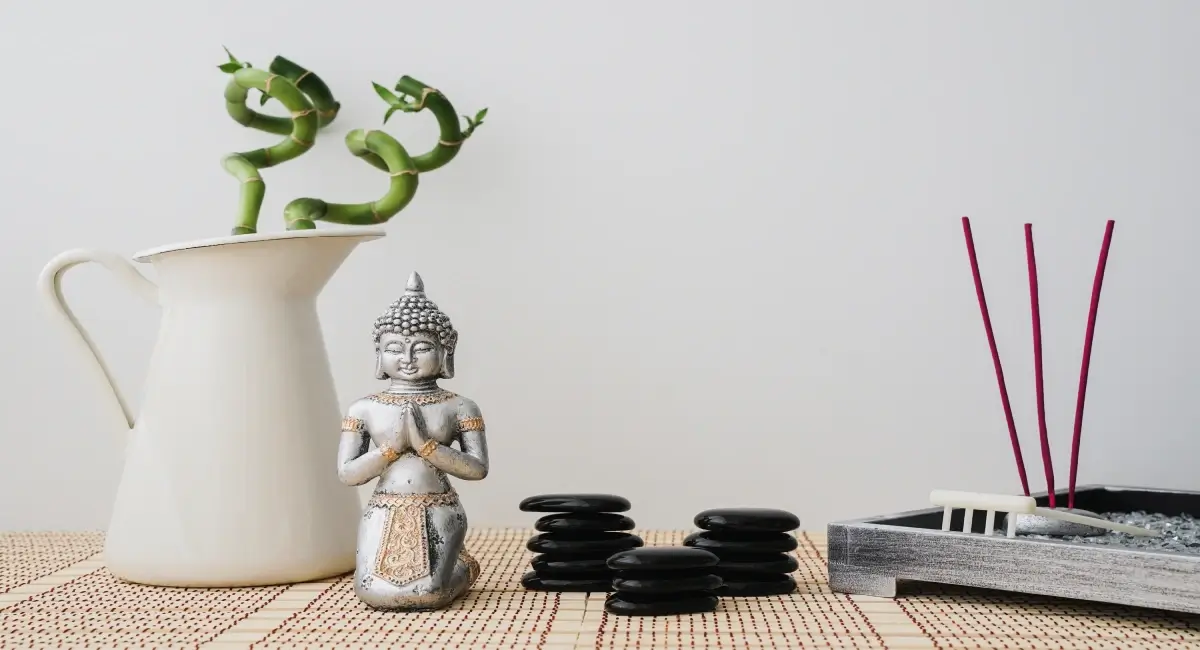Our homes are more than just physical structures; they are our sanctuaries, where we seek comfort and safety from the outside world. But did you know that the energy within your home can also have a significant impact on your overall well-being? That’s where Feng Shui comes in, an ancient Chinese practice that focuses on creating balance and harmony within our living spaces to promote positive energy flow. In this article, we’ll explore the basics of Feng Shui and how you can apply it to your home.
Understanding the Principles of Feng Shui
At the core of Feng Shui is the concept of Qi (Chi), the life force energy that flows through all living things. The goal of Feng Shui is to optimize the flow of Qi within our homes to promote health, wealth, and overall well-being. To do this, we must first understand the principles of Feng Shui.
One of the most fundamental concepts of Feng Shui is the balance of Yin and Yang. Yin represents the feminine, passive, and calm aspects of energy, while Yang represents the masculine, active, and dynamic aspects. In our homes, we aim to achieve a balance between the two to create a harmonious environment.
Another key principle of Feng Shui is the use of the five elements: wood, fire, earth, metal, and water. Each element is associated with different qualities and attributes, and their interactions can affect the flow of Qi in our homes. By incorporating these elements into our decor and furniture, we can create a balanced and harmonious space.
The Bagua map is another essential tool in Feng Shui. It is a map that divides our homes into nine sections, each corresponding to a different area of our lives, such as wealth, health, and relationships. By using the Bagua map, we can enhance the energy flow in specific areas of our homes to promote the corresponding aspect of our lives.
Applying Feng Shui in Your Home
Now that we have an understanding of the key principles of Feng Shui, let’s explore how we can apply them to our homes.
First and foremost, decluttering is an essential step in creating positive energy flow. Clutter can block the flow of Qi and create stagnant energy. By clearing out unnecessary items and creating space, we can promote a more harmonious environment.
Natural light and air flow are also crucial elements in Feng Shui. Enhancing the flow of natural light and fresh air can create a more vibrant and positive atmosphere. Additionally, choosing colors and materials that align with Feng Shui principles can help create a balanced and harmonious space.
Arranging furniture and decor in a way that promotes positive energy flow is another critical aspect of Feng Shui. For example, placing your bed in the command position (i.e., facing the door but not directly in line with it) can create a sense of safety and security. Adding plants and natural elements can also enhance the energy flow in your home.
Using the Bagua map to enhance the energy flow in specific areas of your home is another useful tool in Feng Shui. For example, adding water elements in the wealth area of your home can promote financial abundance, while incorporating fire elements in the relationship area can enhance intimacy and passion.
Common Feng Shui Mistakes to Avoid
While Feng Shui can be a powerful tool for creating positive energy flow, there are also some common mistakes to avoid. Overcrowding and clutter, poor lighting and air flow, and using too many sharp or angular shapes can all disrupt the flow of Qi. Ignoring the Bagua map and neglecting the entrance to your home are also common mistakes that can impact the energy flow in your home.
Conclusion
In conclusion, Feng Shui can be a powerful tool for creating a more harmonious and balanced living environment. By understanding the key principles of Feng Shui and applying them to our homes, we can optimize the flow of Qi and promote health, wealth, and overall well-being. Remember to avoid common Feng Shui mistakes and experiment with different techniques to find what works best for you. With some effort and intention, you can create a space that promotes positive energy flow and supports your goals and aspirations.
